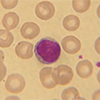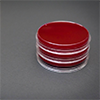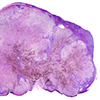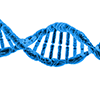
- Home
- Clinical Chemistry Tests
- Lactate
Lactate
Specimen Volume
100uL plasma minimum volume 50 uL (CSF samples can also be used)Sample Preparation
Turnaround Time
1 daySample Processing In Laboratory
Sample must be centrifuged and separated immediately on receipt (which must be within 30 minutes of collection).Sample Stability
Seperated plasma may be stored for 3 days at 4°CGeneral Information
The common cause for increased blood lactate is anoxia resulting from such conditions such as convulsions, shock, sepsis, pneumonia and congestive heart failure. Lactate levels in CSF are increased in bacterial meningitis, and any condition associated with reduced oxygenation of the brain
Lactate is increased in metabolic liver disease, glycogen storage disorders.
Patient Preparation
Patients should not clench and unclench hands before or during phlebotomy. Specimens should be obtained without the use of a tourniquet or immediately after the tourniquet has been applied. If there is any delay in obtaining the specimen or if the initial draw is unsuccessful, the tourniquet should be removed and the blood should be allowed to circulate for at least two minutes before trying again.
Notes
CSF samples can also be used. Please collect these into fluoride/oxalate tube.
Haemolysis interferes with this assay and haemolysed samples will not be analysed.
Reference Range
<16yrs 0.6-2.5 mmol/L (Source : Pathology Harmony Recommendations)
Adult 0.5-2.2 mmol/L (Source : Abbott Diagnostics)
CSF lactate-age related: 1.1-6.7mmol/L (neonates) 1.1-2.4 mmol/L (adults)
Specifications
- EQA Status: UK NEQAS Clinical Chemistry Scheme
- EQAS Scheme: Yes
Creation Date
Monday, 08 August 2011Modification Date
Wednesday, 31 August 2022General Information
Location of Laboratories
Copyright UHB Pathology 2018
Protection of Personal Information – Clinical Laboratory Services comply with the Trust Data Protection Policy and have procedures in place to allow the Directorate and it’s employees to comply with the Data Protection Act 1998 and associated best practice and guidance.
University Hospitals Birmingham medical laboratories at Queen Elizabeth Hospital, Heartlands Hospital, Good Hope Hospital and Solihull Hospital are UKAS (United Kingdom Accreditation Service) accredited to the ISO 15189:2012 standard. For a list of accredited tests and other information please visit the UKAS website using the following link: https://www.ukas.com/find-an-organisation/
- Molecular Pathology is a UKAS accredited medical laboratory No. 8759
- Biochemistry is a UKAS accredited medical laboratory No. 8910
- Haematology and Transfusion is a UKAS accredited medical laboratory No. 8784
- Clinical Microbiology is a UKAS accredited medical laboratory No. 8760
- Cellular Pathology is a UKAS accredited medical laboratory No. 10141
- Musculoskeletal laboratory is a UKAS accredited medical laboratory No. 9897
- Heartlands, Good Hope and Solihull Hospital pathology laboratories are a UKAS accredited medical laboratory No.8217.
Tests not appearing on the UKAS Schedule of Accreditation currently remain outside of our scope of accreditation. However, these tests have been validated to the same high standard as accredited tests and are performed by the same trained and competent staff.
For further test information, please visit the test database: http://qehbpathology.uk/test-database
For further information contact Louise Fallon, Quality Manager, 0121 371 5962
 Biochemistry
Biochemistry Haematology and Transfusion
Haematology and Transfusion Clinical Microbiology (Including Virology)
Clinical Microbiology (Including Virology) Cellular Pathology
Cellular Pathology General Information
General Information Molecular Pathology
Molecular Pathology